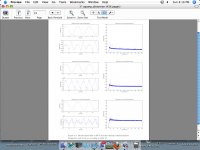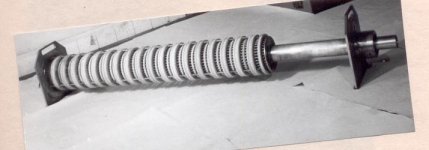Yes, but 99,9% of the audiophiles know the rain dance.99.9% of audiophiles all over the world do not understand noise, do not understand FFT and confuse noise with noise spectral density (FFT bottom).
Yes, but 99,9% of the audiophiles know the rain dance.
Thank you, I am in the remaining 0,1% in this case.
99.9% of audiophiles all over the world do not understand noise, do not understand FFT and confuse noise with noise spectral density (FFT bottom).
Here's another example - I don't know if Andreas Koch calls himself an audiophile, but you might be forgiven for thinking he knew better than to draw the noise floor line for 24bit PCM where he's put it in this graphic : http://www.playbackdesigns.com/wp-content/uploads/2012/11/Picture4.png
<edit> by the way PMA, the factor is 10 in your log expression as we're dealing with powers, not voltages
Last edited:
<edit> by the way PMA, the factor is 10 in your log expression as we're dealing with powers, not voltagesYou must've used 10 yourself to get the result to be 45dB.
Oh no, for it is AMPLITUDE SPECTRUM (see the image properly)
For amplitude spectrum, we have 20 log V1/V2
For power spectrum, we have 10 log P1/P2 and get the same dB. There are only one dB's in this world
Please do not argue, I have the FFT measurements verified.
Thank you, I am in the remaining 0,1% in this case.
Pavel,
you, an audiophile ? Shocking !
Here's another example - I don't know if Andreas Koch calls himself an audiophile, but you might be forgiven for thinking he knew better than to draw the noise floor line for 24bit PCM where he's put it in this graphic : http://www.playbackdesigns.com/wp-content/uploads/2012/11/Picture4.png
Sad manipulation with mass consumer, quite usual in marketing papers.
Sure, we can all do that.
Excellent!
My first experience as a child of about 5 or 6 was having my grandfather or uncles hand me what they thought were broken pocket watches to play with.
My dad gave me a totally disassembled 1964 VW bug engine in a box...I was 12. Best erector set ever!!
He did some really amazing things.Afair, Mr Harrison used Guaiacum wood for the bearings of his clocks.
Ground loop. Total lack of control over current paths and Faraday's law of induction.What I don't understand is WHY precise measurement of power supply frequencies is of much value? What I find more important is WHY some power supplies are sensitive to line cords and some are not.
I thought I was living on the edge with purpleheart..you are not kidding. I machined up some coco bollo, and got the
dust all over me. Was red and itchy for more than a week.
At least I was smart enough to wear a face mask. Inhaling that
has got to be real bad.
Ripple is more of a linear slope due to the almost constant current draw. Do C dv/dt = I works well for the discharge drop. The charging time gets more interesting due to the rise in transformer output voltage as the capacitor charges.
ES
I'm far more interested in how mutual coupling affects input to output of each filter cap.
jn
I'm far more interested in how mutual coupling affects input to output of each filter cap.
jn
Well then measure it. We are shipping a fourteen rack system tomorrow. A bit busy till then. After that a day or too off.
Of course if you have an idea about the technique.
Pavel
Very nicely stated.
ES
MY estimate of an IC's 'audio quality' is related to the steepness of the distortion waveform. If it looks like 'Switzerland' you are in trouble. If it looks like 'rolling hills' then it is probably good sounding.
Personally, I don't care if this non-linearity has to be measured with 'heroic' methods. In my personal opinion, you don't have to measure significant distortion that is probably buried in noise or is very small, because the intrinsic non-linearity of the transfer function appears to be the key, as this non-linearity may appear to the ear as a different (non-measured) distortion such as PIM, but that is only one distortion that we know can be generated from the intrinsic non-linearity of the device (without feedback covering it up).
Personally, I don't care if this non-linearity has to be measured with 'heroic' methods. In my personal opinion, you don't have to measure significant distortion that is probably buried in noise or is very small, because the intrinsic non-linearity of the transfer function appears to be the key, as this non-linearity may appear to the ear as a different (non-measured) distortion such as PIM, but that is only one distortion that we know can be generated from the intrinsic non-linearity of the device (without feedback covering it up).
Well then measure it. We are shipping a fourteen rack system tomorrow. A bit busy till then. After that a day or too off.
Of course if you have an idea about the technique.
ES
As I said, run the capacitor return current over the cap body using a braid. That will do a lot towards decoupling input current and output circuit.
jn
As I said, run the capacitor return current over the cap body using a braid. That will do a lot towards decoupling input current and output circuit.
jn
Like this? Return path is a cylinder, removed for photo.
Attachments
Looks like a flux shunt.
( ~dozen years later, Shocking with/without Blue : ✎ M?n Journaaltje: Jerney Kaagman Naakt )
( ~dozen years later, Shocking with/without Blue : ✎ M?n Journaaltje: Jerney Kaagman Naakt )
as a different (non-measured) distortion such as PIM, but that is only one distortion that we know can be generated from the intrinsic non-linearity of the device (without feedback covering it up).
I though Ron measured PIM, most modern IC's had none while revered audiophile components had lots. So I guess PMA is right these distortions are sought out by the GEB.
- Status
- Not open for further replies.
- Home
- Member Areas
- The Lounge
- John Curl's Blowtorch preamplifier part II

